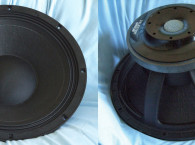
The FTX0820 is built on a four-spoke octagonal shaped cast aluminum frame. Built into the frame is a series of 12 vents—four 20 mm × 2 mm vents and eight 10 mm × 2 mm vents—located below the spider mounting shelf that circulate air off the voice coil and the front plate.
Attached to the frame is the woofer/compression driver finite element analysis (FEA) optimized ferrite motor structure with the compression driver diaphragm assembly attached to the woofer back plate T-yoke and firing into what would normally be a pole vent working as the horn throat. Attached to the top of the hollow pole piece is a short flared conical aluminum horn that completes the compression driver.
The FTX0820’s woofer cone assembly includes a curvilinear Kevlar loaded paper cone suspended by a black M-shaped coated cloth surround and a 4.5” diameter elevated cloth spider. A porous cloth dust cap is used to cover the compression driver horn and to keep extraneous material out of the gap area. Coupling the cone to the driver motor is a 50 mm (2”) diameter voice coil wound with edgewound copper wire on a non-conducting glass fiber former.
The motor structure consists of a 155-mm diameter, 22-mm thick ferrite magnet sandwiched between the front and the rear plates that have a black emissive coating. Celestion has also incorporated a demodulation ring (shorting ring or Faraday Shield) in this motor system. For the high-frequency compression driver, Celestion incorporated a polyimide diaphragm coupled to a 34-mm (1.4”) voice coil wound with edge-wound copper-clad aluminum wire.

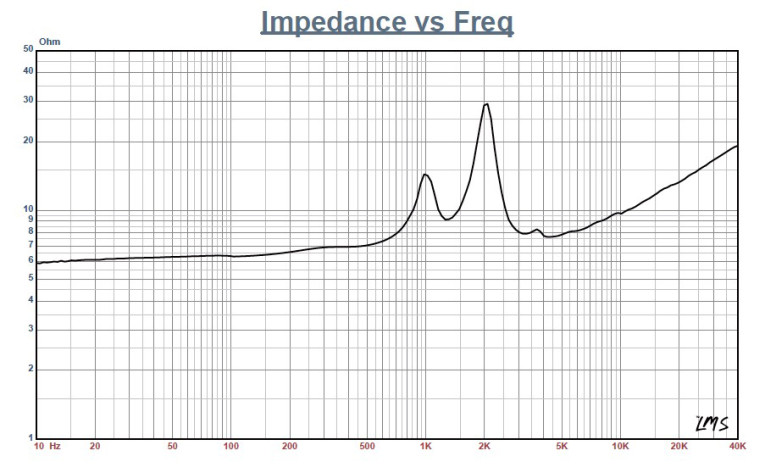
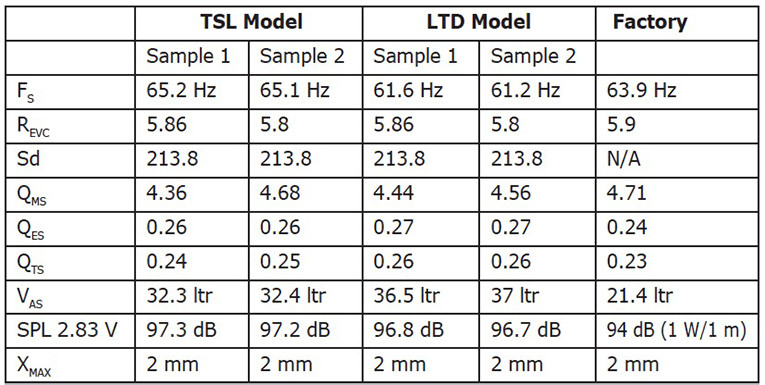
I used the LinearX LMS and VIBox to produce the voltage and the admittance (current) curves to begin testing the woofer half of this coax driver. The driver was clamped to a rigid test fixture in free air at 1, 3, 6, 10, 15, 20, and 30 V. As per the established measurement protocol for Test Bench, the LMS oscillator is turned on for a progressively increasing time period between sweeps to keep the driver heated as close to the third thermal time constant as possible (i.e., from 10 to 50 seconds between sweeps, depending on the voltage level).
Following my established Test Bench test protocol, I no longer use a single added mass measurement and instead used actual measured cone assembly weight provided by Celestion. Next, I post-processed the 14 550-point stepped sine wave sweeps for each sample and divided the voltage curves by the current curves to derive impedance curves, phase calculated and imported the data along with the accompanying voltage curves to the LEAP 5 Enclosure Shop software.
Because most T-S data provided by OEM manufacturers is produced using either a standard method or the LEAP 4 TSL model, I also created a LEAP 4 TSL model using the 1 V free-air curves. I selected the complete data set, the multiple voltage impedance curves for the LTD model, and the 1 V impedance curves for the TSL model in the transducer derivation menu in LEAP 5 and created the parameters for the computer box simulations. Figure 1 shows the woofer’s 1 V free-air impedance curve. Figure 2 shows the compression driver’s impedance curve. Table 1 compares the LEAP 5 LTD and TSL data and factory parameters for both FTX0820 samples.
The FTX0820’s parameter measurement results were reasonably close to the factory data, except for some variation in the VAS. I proceeded to set up two computer enclosure simulations using the LEAP LTD parameters for Sample 1. This included a single sealed box simulation and a single vented simulation. The sealed box simulation consisted of a 300-in3 box with 50% fiberglass fill material. Since a QB3 vented alignment for this driver was too small to be realistically feasible, I choose a larger EBS-type alignment. This resulted in a 637-in3 box, with 15% fiberglass fill material tuned to 62 Hz.
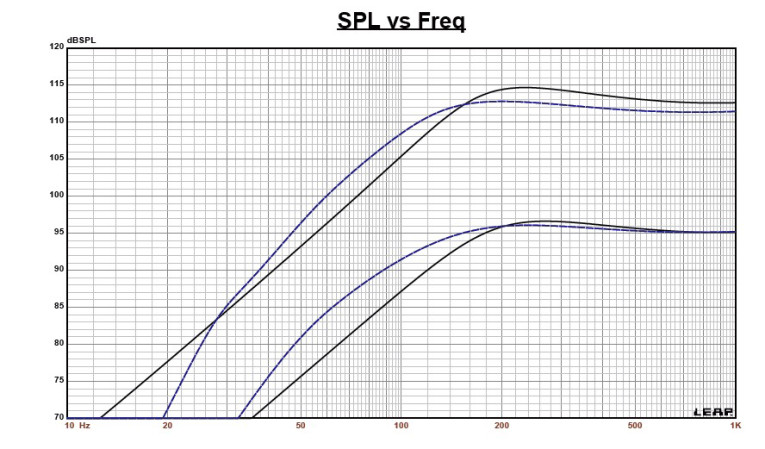
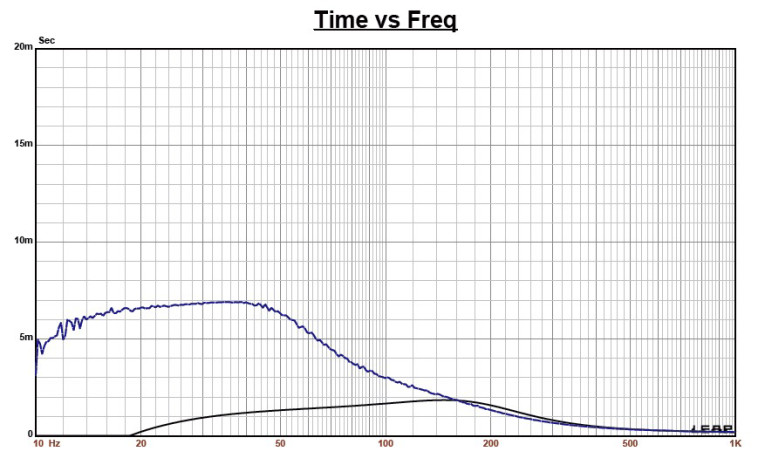

Figure 3 displays the results for the FTX0820’s woofer section in the sealed and vented box simulations at 2.83 V and at a voltage level sufficiently high enough to increase cone excursion to 2.3 mm (XMAX + 15). The test produced a F3 frequency of 155 Hz (–6 dB down at 124 Hz) and a QTC = 0.65 for the sealed box and –3 dB = 116 Hz (–6 dB = 88 Hz) for the 637-in3 box EBS vented simulation tuned to 62 Hz. Increasing the voltage input to the simulations until the maximum linear cone excursion was reached resulted in 115 dB at 25 V for the sealed box enclosure simulation and 113 dB with a 21 V input for the vented design. Figure 4 shows the 2.83 V group delay curves.
Figure 5 shows the 25 V/21 V excursion curves. If you look at the excursion curves, the driver exceeds the XMAX + 15% criteria at 50 Hz for the EBS alignment. The design would benefit from an appropriately placed high-pass filter, as is generally true of all vented enclosures.
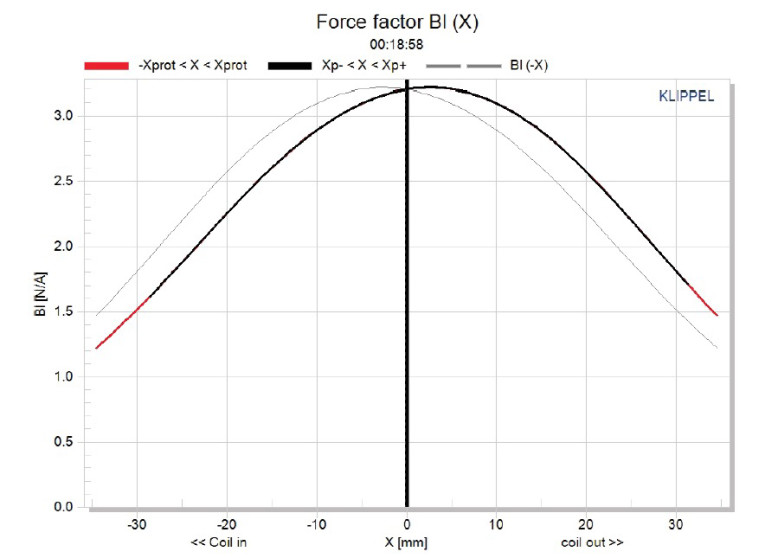
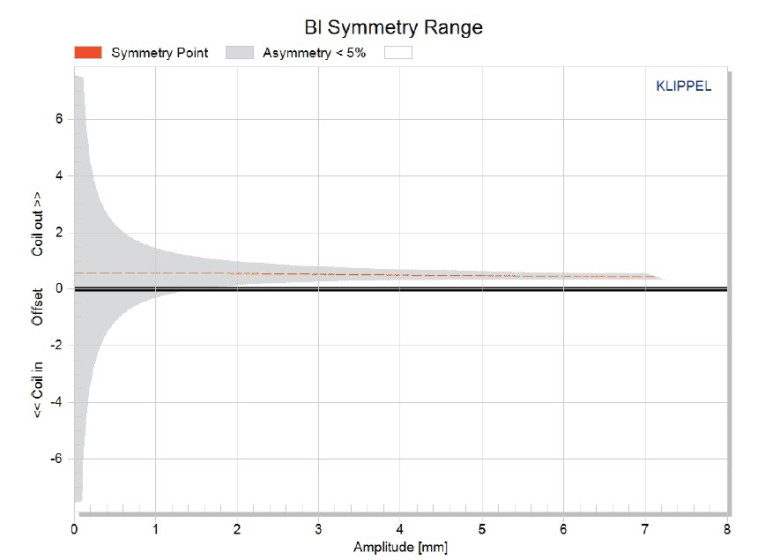
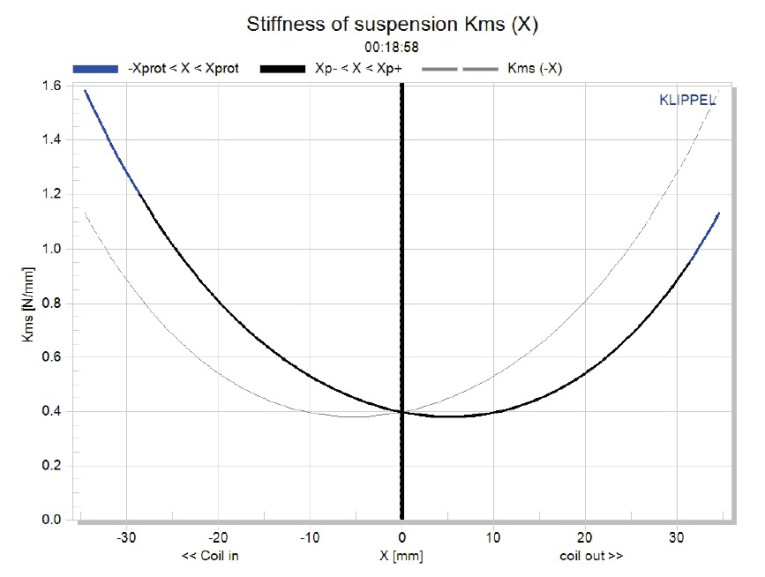
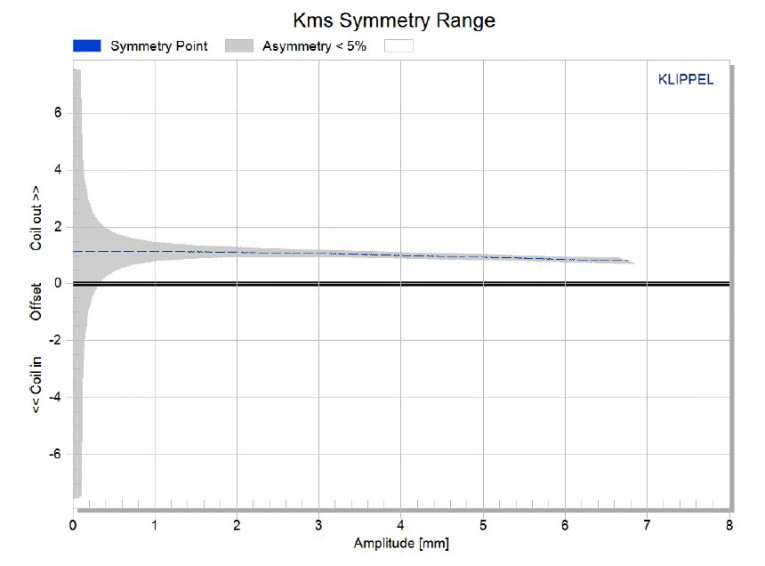
Klippel analysis for the Celestion produced the Bl(X), KMS(X), and Bl and KMS symmetry range plots shown in Figures 6–9. The FTX0820 woofer’s Bl(X) curve looks quite good and is moderately broad, and symmetrical, but with a small amount of forward “coil-out” offset (see Figure 6). The Bl symmetry plot (shown Figure 7) is pretty much 0.12 from the rest position to beyond the physical XMAX, so it is nearly perfect from this standpoint.
Figure 8 shows the FTX0820’s KMS(X) symmetry range cure. Figure 9 shows the FTX0820’s KMS symmetry range curve. The KMS(X) curve is also quite symmetrical in both directions, with a small amount of coil-out (forward) offset. Looking at the KMS symmetry curve, the offset is 1.15 mm at the zero rest position, and decreases to 1.10 mm at the physical XMAX, so again, fairly minor displacement issues.
The FTX0820’s displacement limiting numbers, calculated by the Klippel analyzer, were XBl at 82% (Bl decreasing to 82% of its maximum value) was 3.2 mm and for XC at 75% (compliance decreasing to 75% of its maximum value) was 2.2 mm. For the FTX0820, the compliance is the most limiting factor at the prescribed distortion level of 10%. If we apply the more liberal 20% distortion criteria, which is not that inappropriate, and given the relative difficulty of perceiving total harmonic distortion (THD), the numbers for XBl = 4.4 mm and XC = 4.3 mm, are both numbers beyond the physical XMAX.

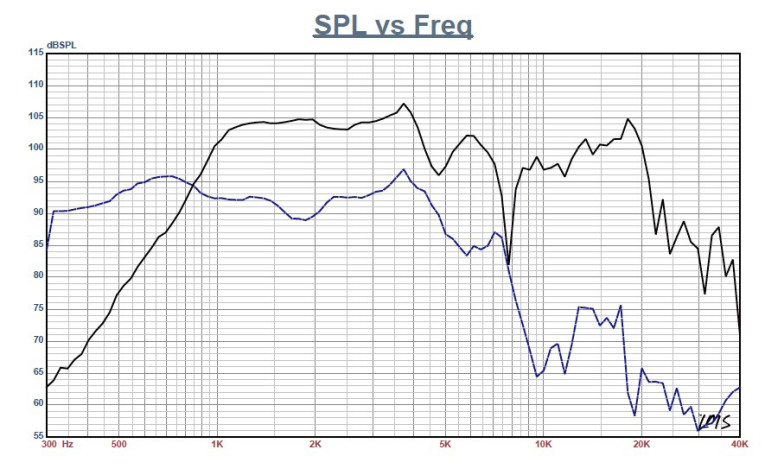
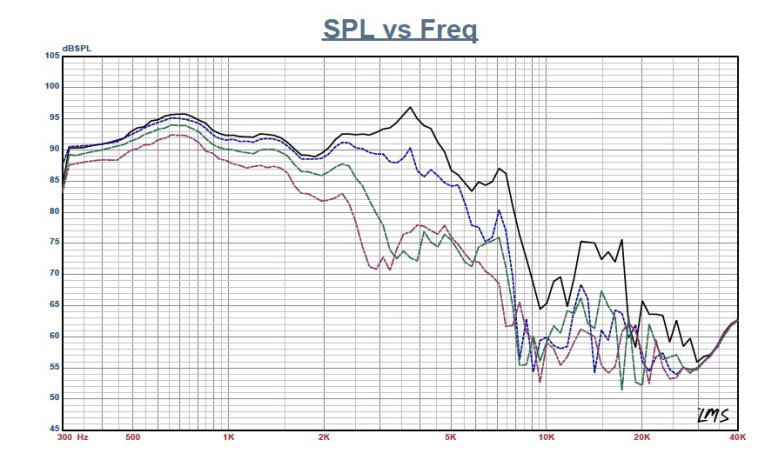
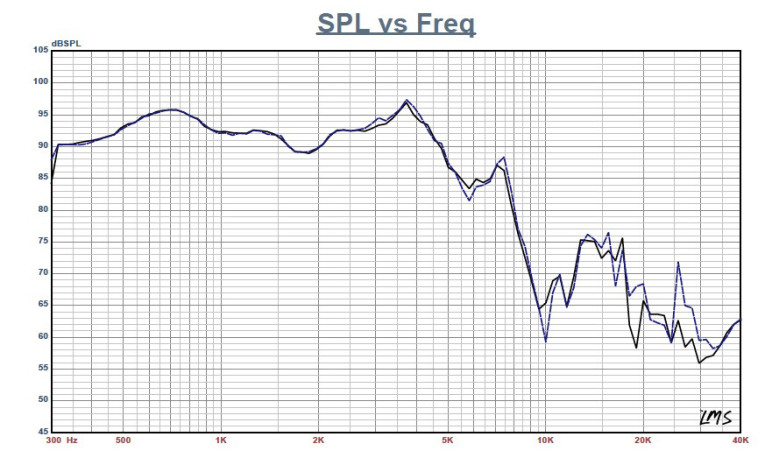
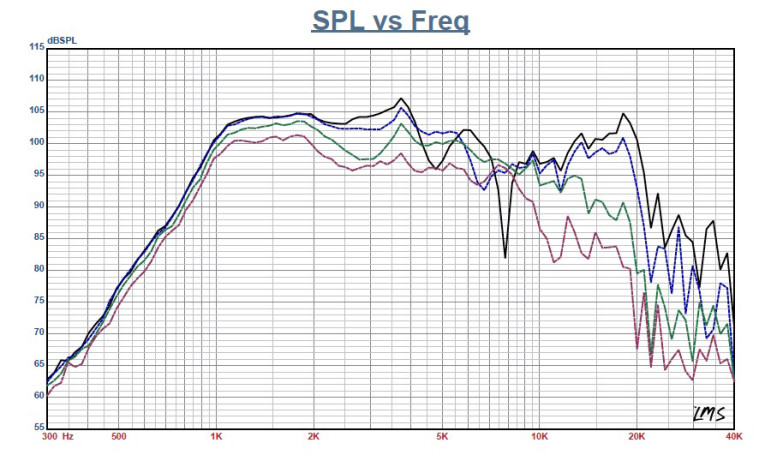

Figure 10 shows the Celestion coax woofer’s inductance curve L(X). Inductance will typically increase in the rear direction from the zero rest position as the voice coil covers more pole area unless the driver incorporates a shorting ring. Since the FTX0820 does incorporate a faraday shield (shorting ring) in the motor assemble, we see the typical inductance decrease for the coil-in direction of motion.
However, from XMAXIN to XMAXOUT, the inductive change is about 0.04 mH, which is excellent. Next I mounted the FTX0820 in an enclosure that had a 15” × 9” baffle and was filled with damping material (foam). I measured both the woofer’s and the compression driver/horn’s on- and off-axis frequency response from 300 Hz to 40 kHz. This was performed at 2.83 V/1 m using the LMS gated sine wave technique.
Figure 11 gives the FTX0820 woofer’s on-axis response combined with the compression driver/horn’s on-axis responses. The woofer response shows a smooth rising response with the typical response decline above 800 Hz, followed by a 7 dB breakup peak just prior to the low-pass roll off.
The compression driver/horn has a high Q (probably not very audible) cancellation at about 7.8 kHz that disappears off-axis, but is ±2 dB from 1 to 4 kHz. I did a 1/3 octave smoothing to eliminate the cancellation at 7.8 kHz, and got a ±5 dB SPL from 4 kHz to 21 kHz. Figure 12 shows the FTX0820 woofer’s on- and off-axis frequency response at 0°, 15°, 30°, and 45°. The –3 dB at 30°, with respect to the on-axis curve occurs at 1.9 kHz, making 2 kHz a reasonable crossover range. Celestion recommends a second-order 2.2 kHz crossover frequency for the FTX0820. Figure 13 gives the two-sample SPL comparisons for the FTX0820 woofer samples, both obviously closely matched.
For the compression driver with the short conical horn, Figure 14 shows the on- and off-axis frequency response out to 45°. Figure 15 shows the two-sample SPL comparison, which is good throughout the entire frequency range with some variation above 8.5 kHz. The last group of tests was performed using the Listen AmpConnect analyzer and the SC-1 microphone (courtesy of Listen, Inc.) to measure distortion and generate time-frequency plots.


For the distortion measurement, I rigidly mounted the driver in free air and set the SPL to 104 dB at 1 m using a noise stimulus. Then, I measured the distortion with the Listen microphone placed 10 cm from the dust cap/horn’s mouth. Figure 16 shows the woofer’s distortion curves (8.2 V). Figure 17 shows the compression driver’s distortion curves (0.7 V).
Last, I employed the AmpConnect analyzer, running SoundCheck 14 to get a 2.83 V/1 m impulse response for the woofer and the compression driver. I imported the data into Listen’s SoundMap Time/Frequency software. Figure 18 shows the FTX0820 woofer’s resulting cumulative spectral decay (CSD) waterfall plots. Figure 19 shows the compression driver’s resulting CSD waterfall plots. Figure 20 gives the woofer’s Wigner-Ville logarithmic surface map (for its better low-frequency performance). Figure 21 shows the Short Time Fourier Transform (STFT) for the compression driver. Overall, the FTX0820 is a well-crafted new small diameter coax for pro sound applications.
www.celestion.com

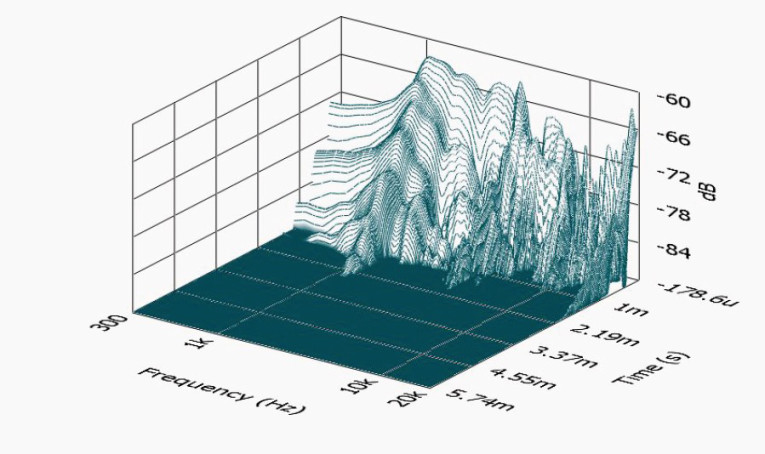
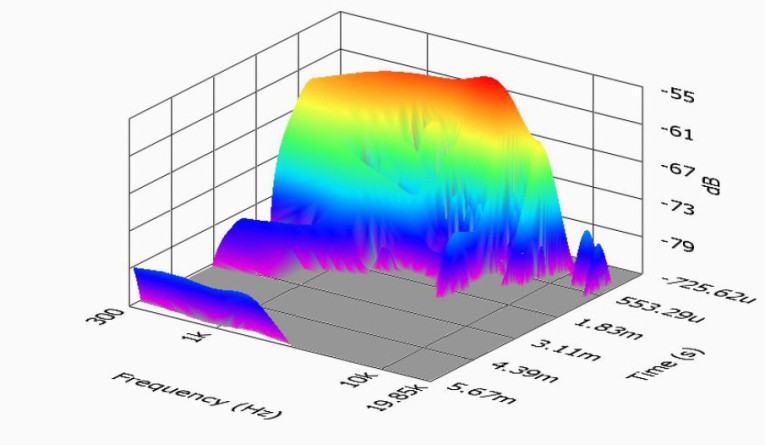
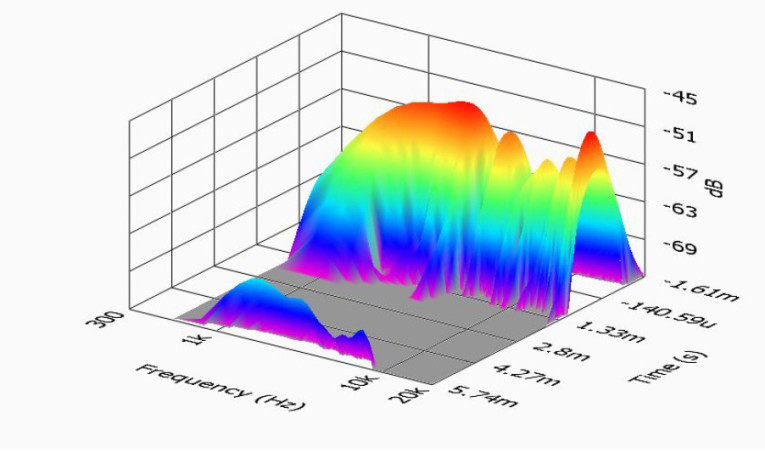
This article was published in Voice Coil, October 2015.





